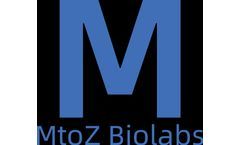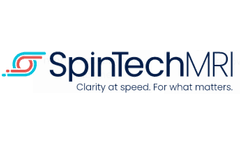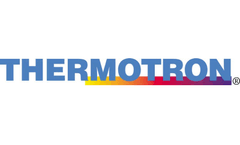Disease Monitoring Articles & Analysis
21 articles found
Acetylation is a common post-translational modification of proteins, typically occurring on lysine residues of proteins, and plays a crucial role in regulating protein function, cell signaling, gene expression, and disease onset. For instance, the acetylation state of histones directly influences chromatin structure and the regulation of gene expression.Acetylation detection ...
These differences may lead to different susceptibilities to diseases, drug responses, and treatment effects. With this technology, doctors can more accurately assess the disease status of patients, predict the trend of disease progression, and formulate more personalized treatment plans, improve treatment effects and reduce side effects.1. ...
Autophagy has also been implicated in pathological conditions including neurodegenerative diseases, cancer, and inflammatory diseases. Modulation of autophagy has become a potential therapeutic target in human diseases. To monitoring and measuring autophagy, it is necessary to label and visualize the phagophores and ...
DIA technology has a wide range of applications in biomedical research, disease biomarker discovery, and drug development.DIA Proteomics SequencingDIA technology systematically scans the entire mass range during mass spectrometry analysis, rather than analyzing only a few preselected ions. ...
Identification of lipid indicators for disease diagnosis Lipidomics is used to observe changes in lipids before and after the disease, thereby identifying abnormal lipids. These lipids have the potential to become biomarkers indicating the development of disease. Testing these lipid indicators can help with early disease ...
In addition, carboxylic acid PEGs can be used to construct imaging probes with specific biological activities, such as pH-responsive probes, temperature-sensitive probes, etc., for disease diagnosis and treatment monitoring. Biomaterials PEGs and their carboxylic acid derivatives also play an important role in biomaterials. ...
What are rare diseases? Rare diseases are a diverse group of disorders that affect a small percentage of the population, often occurring as a result of genetic mutations. ...
Various cell factors are involved in processes such as stem cell culture, immune cell culture, and organoid culture. Disease modeling: Using cytokines in vitro to establish disease models for studying disease mechanisms or testing therapeutic drugs. ...
Furthermore, MMP-3 is a reliable biomarker for assessing disease activity, imaging monitoring, predicting disease outcomes, and treatment response in rheumatoid arthritis [4]. ...
In recent years, enzymes have been widely used in disease diagnosis, providing a quick and accurate way to detect and monitor diseases. ...
Application in medical research Etiology research. There are lots of untreated diseases with unknown etiologies, which are called idiopathic diseases in clinics. ...
The use of Quantitative Susceptibility Mapping (QSM) is often viewed as incompatible with current standard radiology workflows. Some radiologists or departments may be unaware of its existence or purpose. Despite the skepticism surrounding its viability in a clinical setting, QSM shows great potential in a wide range of clinical applications, particularly for biomarker detection and ...
Being the first bladder scanner in the world which can measure BWT bladder wall thickness, M5 makes it possible that BWT can be monitored easily and quickly on daily basis. This feature fosters research on coorelation between BWT and different urological diseases. ...
Alzheimer’s and Parkinson’s disease are both neurological diseases that cause progressive damage to the brain, resulting in a decline in neurocognitive function. While Parkinson’s disease is known for affecting movement and function and Alzheimer’s disease is known for affecting cognition, they are a bit more complex than that. Below, we provide an overview of ...
Parkinson’s disease is a progressive neurodegenerative disease that is most commonly known for affecting movement. It primarily impacts dopaminergic, or dopamine-producing, neurons in a specific area of the brain known as the substantia nigra. Typically, symptoms develop slowly over years and continue to worsen as the disease progresses. While the manifestation of symptoms tends to vary ...
I saw the tremendous potential in having a positive impact on human beings with minimal residual disease (MRD) monitoring. I thought back to when my mom was sick, and wished we’d had a modern, more accurate MRD test available at that time for ovarian cancer. ...
Applications for fluorescent peptides range from the study of peptide-protein interactions, enzyme activity assays, or the development of novel disease models. To be more specific, fluorescent peptides are frequently used as signal peptides for in vivo biomedical imaging, protein binding, and localization studies for instance. ...
February is National Age-Related Macular Degeneration (AMD) and Low Vision Month. This disease is the leading cause of blindness, and its prevalence is expected to soar as the world’s population ages, leading to an overwhelming projected demand for AMD care by 2050. ...
We are thinking of those who have been personally impacted and doing our part to slow the spread of the disease. We continue to monitor the situation closely, follow the guidance of the Centers for Disease Control and Prevention (CDC), the World Health Organization (WHO), and other local and national health organizations. ...
It’s not often you lovingly hug a 450-pound piece of equipment, but if it makes your work life easier you show your appreciation. The CDS-5 helps lab technologists create consistent and reliable environments for their work regardless of the day-to-day variables, like the weather. Imagine the weather outside impacting your office work indoors. Sounds inconvenient, right? That used to be a ...


















